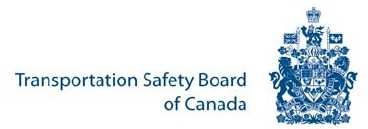Fri, Dec 11, 2009
Canadian Transportation Board Says Plane Was Overloaded, Other
Factors Involved
 The Canadian Transportation Safety
Board has released its final report in an accident that occurred in
March, 2008 that claimed the lives of the pilot and four passengers
on the plane.
The Canadian Transportation Safety
Board has released its final report in an accident that occurred in
March, 2008 that claimed the lives of the pilot and four passengers
on the plane.
The pilot, Regan Williams, was the president of A.D. Williams
Engineering, which owned the plane. He held an instrument rating
and had about 2,200 hours in his logbook, of which 987 hours were
in the PA-46-310P model and 166 hours were in the aircraft he was
flying at the time of the accident.
The investigation centered on a mechanical gyro, which Williams
had had examined prior to the flight. According to the TSB report,
'He had the KI256 and the associated KC192 autopilot computer
removed and bench tested before the occurrence flight. The KI256
signal outputs to the autopilot computer were found to be too
unstable (jittery) to adjust, and the rotor bearings were noisy
when operating. An overhaul was recommended but could not be
performed until the following week, and a replacement or exchange
instrument was not available. Because the KI256 display appeared to
be within bench test parameters, the pilot requested that the units
be reinstalled to complete the occurrence flight before further
repairs were completed, with the knowledge that the autopilot
problems had not been rectified. Section 1.1.1 of Appendix A of the
COM stated “Autopilot must be serviceable for planned single
pilot operations.”
TSB examination of the KI256 gyro/horizon revealed significant
internal wear and damage that pre-dated the occurrence:
- The rotor bearings and shaft had excessive wear and fretting
damage.
- The gimbal roll shaft had considerable fretting damage.

PA46 File Photo
Paint transfer from the rotor to the housing at impact did not
exhibit smearing, indicating that the rotor was stationary at the
time of impact.
While the gyro seemed to be a principal factor in the accident,
TSB listed several causes and contributing factors. Among them:
- The gyro/horizon failed due to excessive wear on bearings and
other components, resulting from a lack of maintenance and due to a
vacuum system that was possibly not at minimum operating
requirements for the instrument.
- The gyro/horizon was reinstalled into the aircraft to complete
the occurrence flight without the benefit of the recommended
overhaul.
- The autopilot became unusable when the attitude information
from the gyro/horizon was disrupted.
- The pilot had not practised partial panel instrument flying for
a number of years, was not able to transition to a partial panel
situation, and lost control of the aircraft while flying in
instrument meteorological conditions.
- The aircraft was loaded in excess of its certified gross weight
and had a center of gravity (C of G) that exceeded its aft limit.
These two factors made the aircraft more difficult to handle due to
an increase of the aircraft’s pitch control sensitivity and a
reduction of longitudinal stability.
- The structural limitations of the aircraft were exceeded during
the uncontrolled descent; this resulted in the in-flight
breakup.
- There were a number of deficiencies with the company’s
safety management system (SMS), in which the hazards should have
been identified and the associated risks mitigated.
The Edmundton Journal reports that the accident happened five
months to the day after another crash that killed the founder of
the company, Arlen Williams.
More News
Omnidirectional Approach Lighting System ODALS consists of seven omnidirectional flashing lights located in the approach area of a nonprecision runway. Five lights are located on t>[...]
"Polaris Dawn, the first of the program’s three human spaceflight missions, is targeted to launch to orbit no earlier than summer 2024. During the five-day mission, the crew >[...]
Also: 1800th E-Jet, Uncle Sam Sues For Landing Gear, Embraer Ag Plane, Textron Parts A friend of the family reported that Lt. Col. (Ret.) Richard Glenn Rutan flew west on Friday, M>[...]
Also: Virgin Galactic, B-29 Doc to Allentown, Erickson Fire-Fighters Bought, FAA Reauthorization After dealing with a big letdown after the unexpected decision by Skyreach to disco>[...]
“Our aircrews are trained and capable of rapidly shifting from operational missions to humanitarian roles. We planned to demonstrate how we, and our BORSTAR partners, respond>[...]
 ANN's Daily Aero-Term (05.05.24): Omnidirectional Approach Lighting System
ANN's Daily Aero-Term (05.05.24): Omnidirectional Approach Lighting System Aero-News: Quote of the Day (05.05.24)
Aero-News: Quote of the Day (05.05.24) Airborne 05.06.24: Gone West-Dick Rutan, ICON BK Update, SpaceX EVA Suit
Airborne 05.06.24: Gone West-Dick Rutan, ICON BK Update, SpaceX EVA Suit Airborne 05.03.24: Advanced Powerplant Solutions, PRA Runway Woes, Drone Racing
Airborne 05.03.24: Advanced Powerplant Solutions, PRA Runway Woes, Drone Racing Aero-News: Quote of the Day (05.06xx.24)
Aero-News: Quote of the Day (05.06xx.24)




